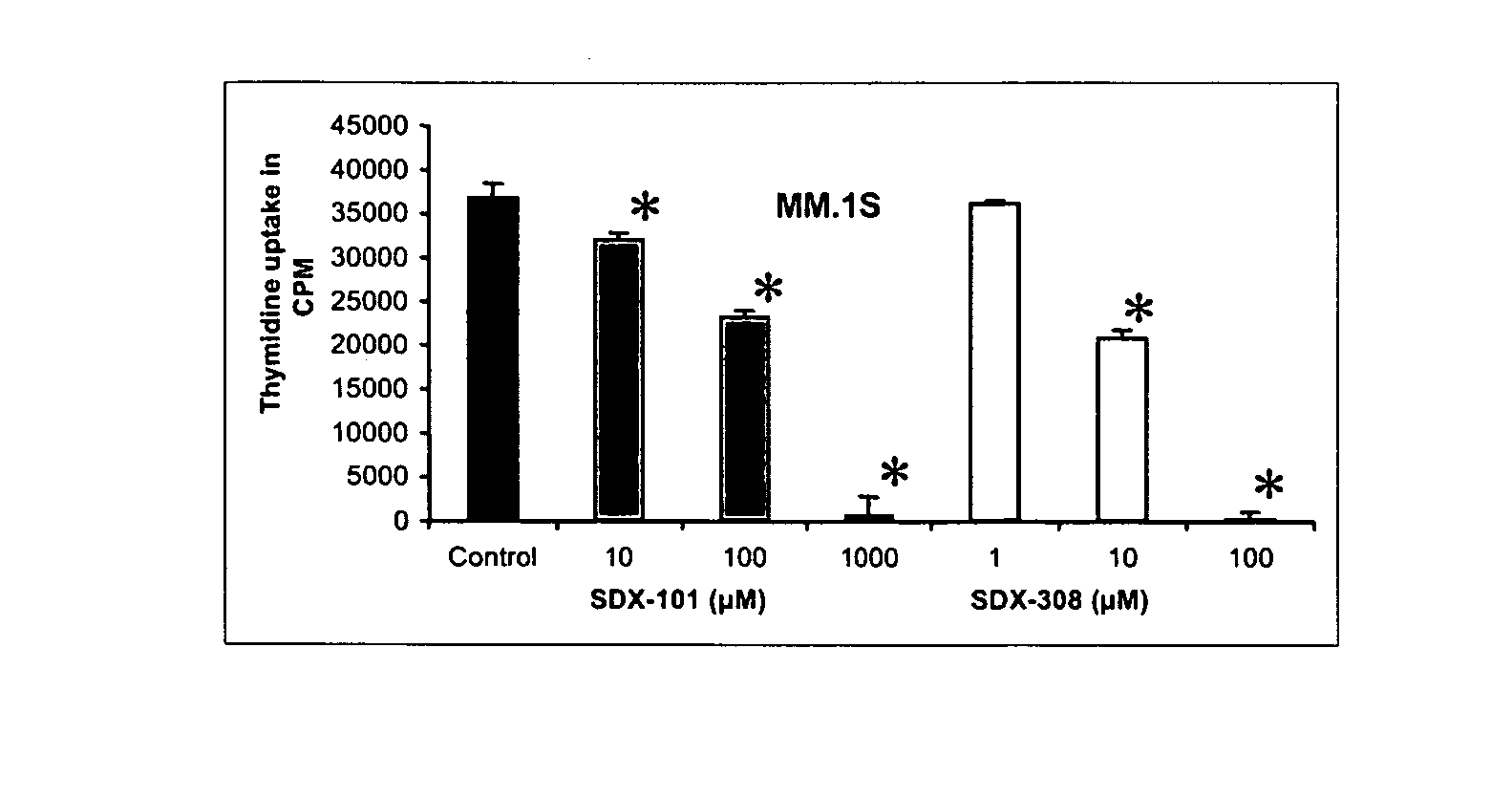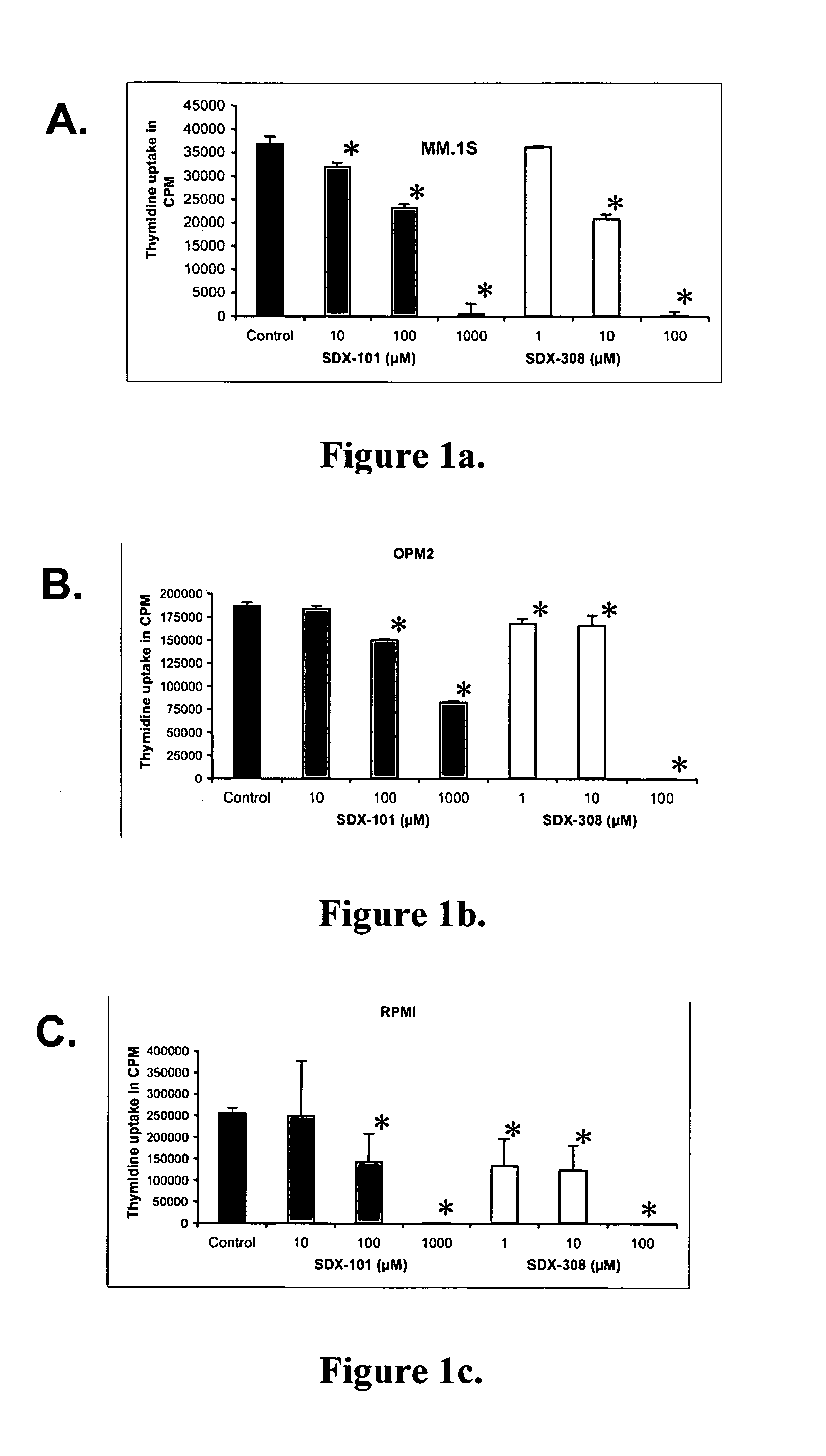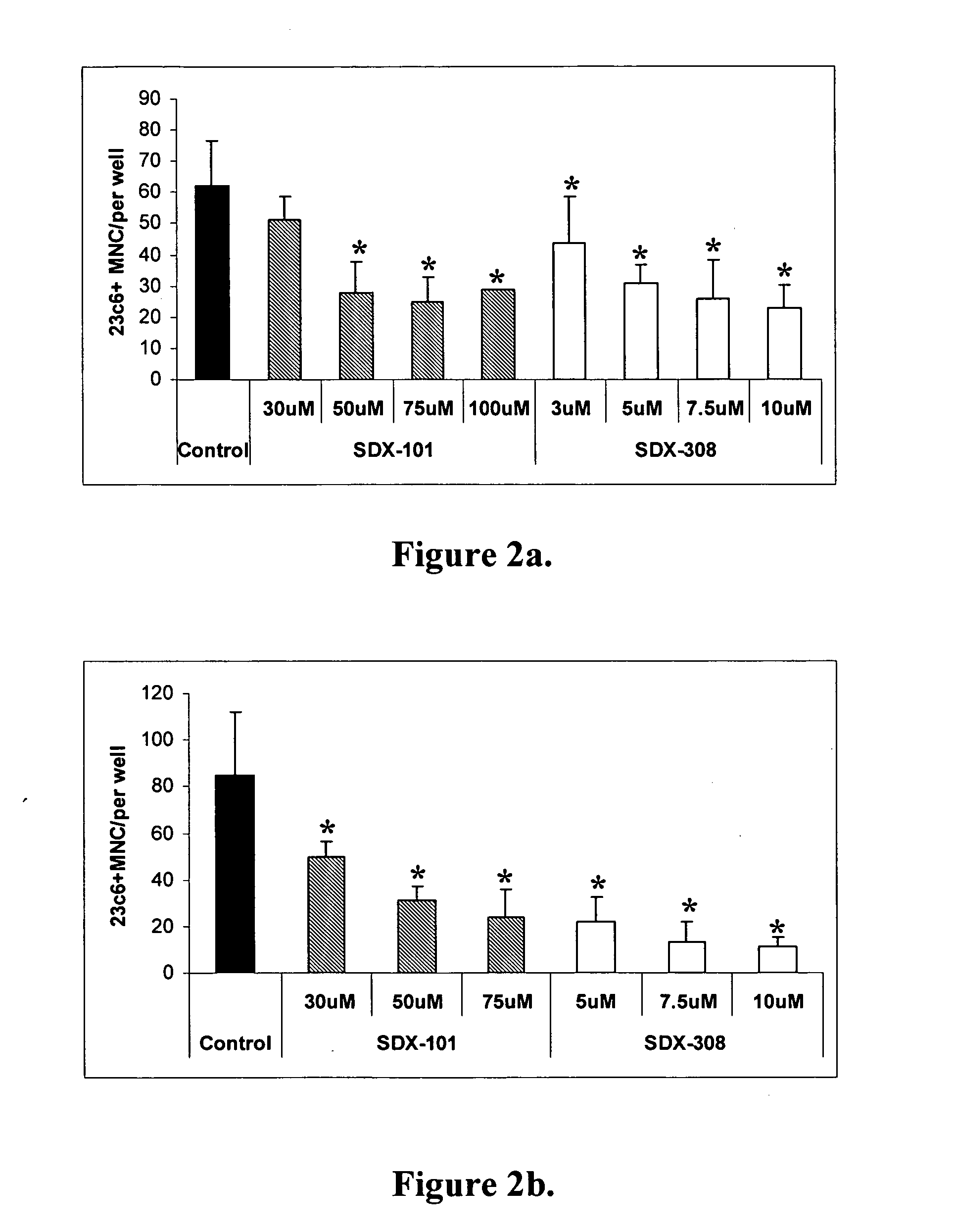Methods for inhibiting osteoclastogenesis
a technology of osteoclastogenesis and inhibition, applied in the field of pharmaceuticals, can solve the problems of limited success and patient's more susceptible to bone fracture, and achieve the effect of inhibiting osteoclastogenesis
- Summary
- Abstract
- Description
- Claims
- Application Information
AI Technical Summary
Benefits of technology
Problems solved by technology
Method used
Image
Examples
example 1
Materials and Cell and Molecular Assays Used in Subsequent Examples Chemicals
[0079] SDX-101 (R-etodolac) and SDX-308 were provided by Cephalon, Inc. (Frazer, Pa.). Both drugs were prepared in DMSO freshly for every single experiment just before use. Recombinant human receptor activator of NFκ-B ligand (RANKL) was purchased from Roche (Branchburg, N.J.), and human macrophage colony-stimulating factor (M-CSF) was obtained from R&D Systems Inc. (Minneapolis, Minn.). Alpha-Minimal essential medium (α-MEM), fetal calf serum (FCS), L-glutamine and other cell culture reagents were purchased from Invitrogen (Carlsbad, Calif.). Horse serum was obtained from Hyclone (Logan, Utah). Hypaque-Ficoll and all other chemicals were purchased from Sigma Chemical Co. (St. Louis, Mo.), unless otherwise stated.
Cells and Cell Culture:
[0080] All studies and procedures were approved by The Institutional Review Board of the University of Pittsburgh. Bone marrow cells were obtained from healthy volunteers...
example 2
SDX-308 Exhibits 10-Fold Stronger Inhibition of MM Cell Growth Relative to SDX-101
[0096] To measure the effect of SDX-101 and SDX-308 on proliferation of multiple myeloma cell lines, different multiple myeloma cell lines were evaluated: MM.1S, RPMI-8266 and OPM2 were treated with SDX-101 or SDX-308 at 1, 10, and 100 μM for 48 hours. The DNA synthesis measured by thymidine incorporation was found to be significantly inhibited at concentrations of 10 μM for SDX-101 in MM.1S cells (FIG. 1A). OPM2 and RPMI-1822 cells showed significant inhibition at 100 μM for SDX-101 (FIGS. 1B and 1C). In contrast, SDX-308 showed a 10- to 100-fold greater anti-proliferative activity, significantly inhibiting (P<0.01) MM growth at 1 μM in OPM2 and RPMI cells and at 10 μM in MM.1S cells in comparison to control treatment (FIG. 1 A-C).
example 3
SDX-101 and SDX-308 Demonstrate Dose-Dependent and Early Inhibition of Osteoclast Formation
[0097] The effect SDX-101 and SDX-308 on OCL formation was tested using human non-adherent mononuclear bone marrow cells from healthy donors and untreated multiple myeloma (MM) patients. A dose of 50 ng / ml RANKL and 10 ng / ml M-CSF was used to stimulate the development of large number of multinucleated OCL. Compounds were added to the cultures twice a week at the time of a half-media change for the duration of the 21-day assay. SDX-101 and SDX-308 produced a dose-dependent inhibition of RANK-L / M-CSF-induced human osteoclastogenesis both in cultures from healthy donor and MM patients.
[0098] Each drug was tested at several doses, which ranged from 30 to 100 μM for SDX-101, and 3 to 10 μM for SDX-308 (FIGS. 2A and B). In the case of SDX-101, all doses over 50 μM tested exhibited statistically significant inhibition of OCL formation (FIG. 2A). Surprisingly, SDX-308 showed 10-fold stronger inhibit...
PUM
| Property | Measurement | Unit |
|---|---|---|
| density | aaaaa | aaaaa |
| humidity | aaaaa | aaaaa |
| humidity | aaaaa | aaaaa |
Abstract
Description
Claims
Application Information
 Login to View More
Login to View More - R&D
- Intellectual Property
- Life Sciences
- Materials
- Tech Scout
- Unparalleled Data Quality
- Higher Quality Content
- 60% Fewer Hallucinations
Browse by: Latest US Patents, China's latest patents, Technical Efficacy Thesaurus, Application Domain, Technology Topic, Popular Technical Reports.
© 2025 PatSnap. All rights reserved.Legal|Privacy policy|Modern Slavery Act Transparency Statement|Sitemap|About US| Contact US: help@patsnap.com



